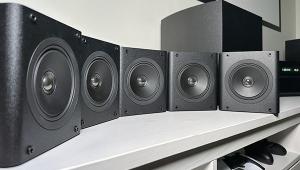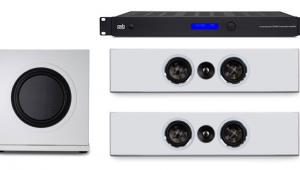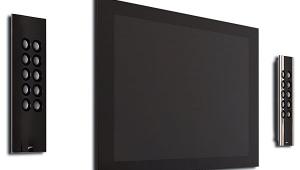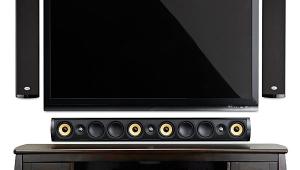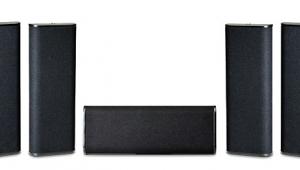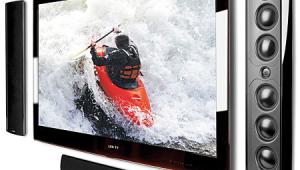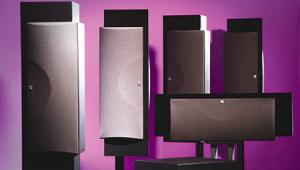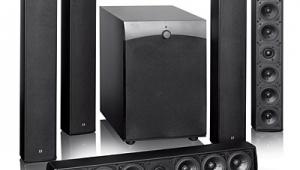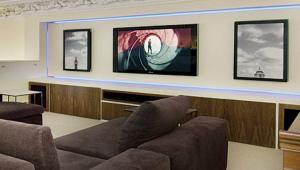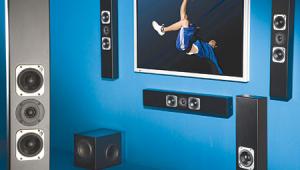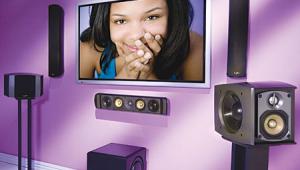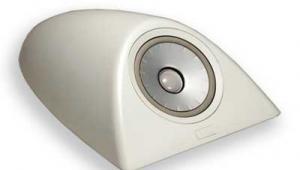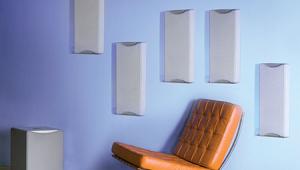Review: Outdoor Speakers
Now that the weather is warm, everyone’s urge to go outside is irresistible. For you, it’s easy: Just walk out the door. For speaker manufacturers, it’s a lot harder — and not because they’re all pale geeks who never leave the lab. It’s because the outdoors is a hostile environment for anything that uses electricity. Water can corrode metal parts, or even short out circuits. Dust can impede moving parts and clog vents. Bugs can crawl inside enclosures and set up comfy homes.
Speaker makers typically solve these problems by using plastic cabinets for their outdoor models. But unless the plastic is well braced and thickly molded, it tends to vibrate, so the enclosure adds its own sound to the music. The speaker domes, cones, and surrounds must be waterproof, thus limiting the materials that can be used. And the speaker doesn’t have the advantage of “room gain,” the tendency of typical residential rooms to boost bass. Yet the usual solutions for increasing bass response — adding ports or using a subwoofer — can be impractical outside.
Most outdoor speakers sell for less than $200/pair, leaving manufacturers little room for sound-quality enhancements. But doubling the price to about $400/pair allows for lots of improvements: stiffer enclosures, better drivers, even a decent crossover. If you’re willing to spend four bills on outdoor sound, you can get a system that’s competitive with a decent low-cost indoor rig.
But which one do you buy? Truth be told, we didn’t know until now, because outdoor speakers rarely get serious reviews. That’s why we decided to give four pairs of conventional outdoor speakers — and one very unusual “special purpose” speaker — the Sound & Vision treatment:a blind listening session with several panelists in a real backyard, followed by full lab tests.
All speakers (except for that “special purpose” model) were mounted in a vertical orientation on a large wooden plate against a wall in my backyard. Thin black fabric concealed the speakers’ identities. I used my custom-built blind testing switcher, which let the panelists switch among the speakers using a handheld controller; it also allowed me to match the listening levels for all speakers. Powering the speakers were two 200-watt-per-channel amps: an ATI AT2007 and an Outlaw Audio Model 7700, which are made on the same production line and use identical circuit topology. Panelists could connect a smartphone or a laptop for playback.
Our listeners included S&V contributing technical editor Geoffrey Morrison, voice actress (and frequent S&V headphone test panelist) Lauren Dragan, and me. As usual, we didn’t necessarily try to find a “winner,” because tastes and priorities in sound vary; we didn’t completely agree in our assessments, so our fave obviously might not be yours. But we described the sound of each speaker, and we didn’t hesitate to say which ones we liked the best.
Every model reviewed here (except for that “special purpose” speaker) comes with a swiveling bracket. All but one (yep, that same speaker) are available in white or black. And every one’s at least waterproof enough to survive a rainstorm.
You can read the details of how I did the measurements below. Click on the links at right to read the reviews, then check page 2 of this article for the Bottom Line wrap-up.
Measurement Notes
I measured the frequency response of the outdoor speakers using quasi-anechoic technique to remove the effects of reflections from nearby objects. Because outdoor speakers are almost always mounted on or near a reflecting/reinforcing surface — a wall, an eave, a fence — I decided to mount them on the same ersatz wall I use for on-wall speaker measurements. The wall is a 2 by 4-foot sheet of 1/2-inch plywood, with its edges surrounded by foam to prevent diffraction. You can see the results of the on-wall mounting in the deep, narrow dip around 500 Hz that shows up in the measurements. The microphone was placed at a distance of 2 meters. For each speaker, I positioned the microphone directly in front of the tweeter, then adjusted the mike position slightly to get the flattest response. The quasi-anechoic measurements were made without grilles and smoothed to 1/12th octave. Bass response of all speakers was measured using close-miking technique, with the mike positioned about 5mm from each woofer and port. Bass response measurements were scaled and summed, then spliced to the quasi-anechoic measurements at 200 Hz. Results are normalized to 0 dB at 1 kHz. All frequency response measurements were made with a Clio FW audio analyzer then imported into a LinearX LMS analyzer for post-processing.
- Log in or register to post comments
